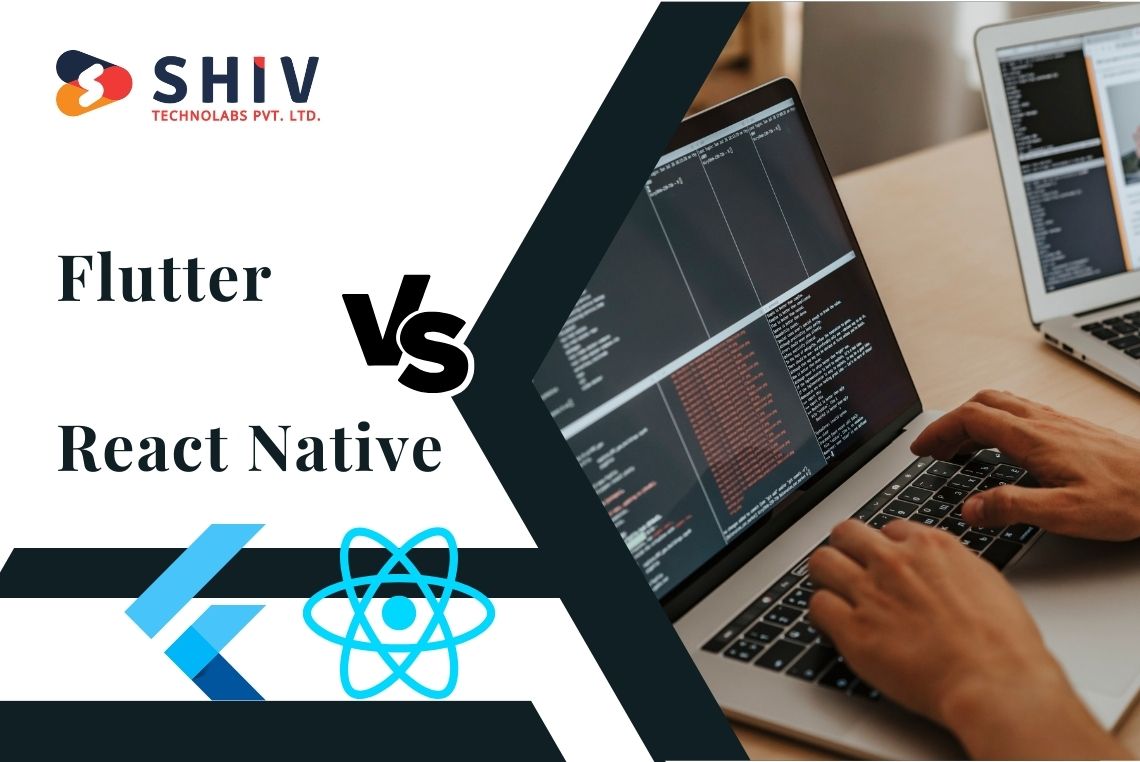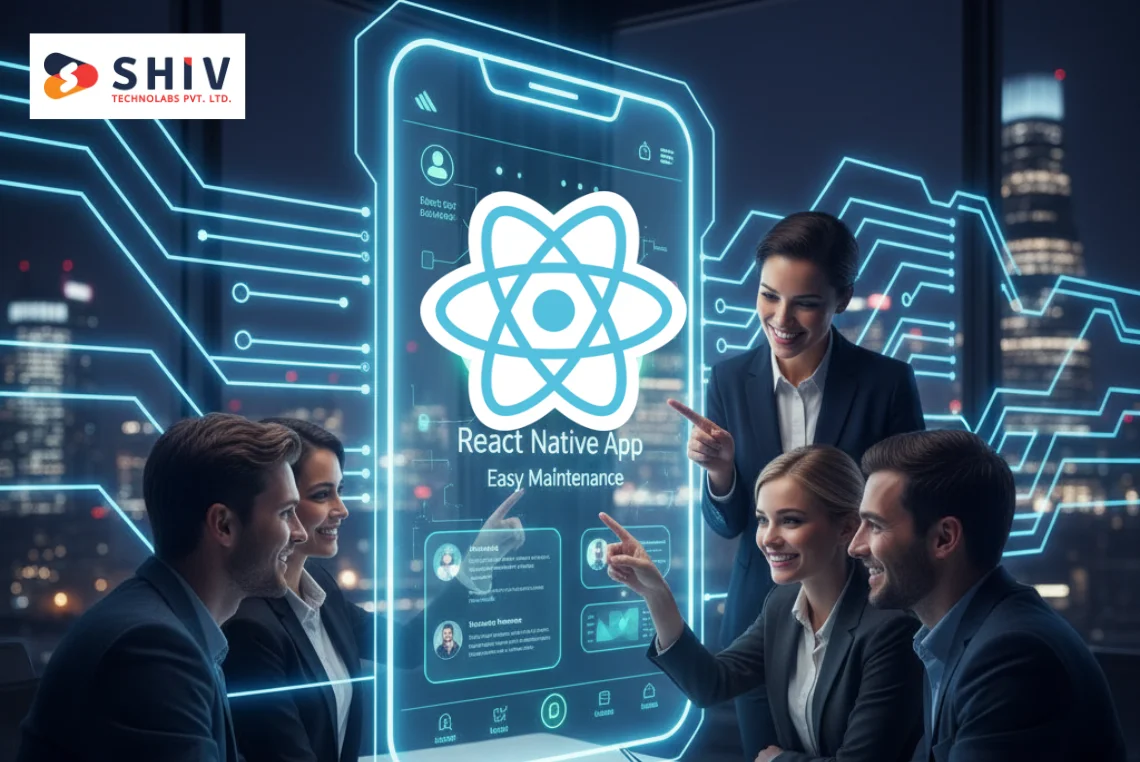Table of Contents
In recent years, mobile app development has seen a significant shift, with businesses looking for efficient and scalable solutions. Among the many technologies available, Flutter and React Native have emerged as leading choices. The decision between these two platforms can greatly affect a business’s ability to deliver smooth user experiences, manage costs, and speed up time-to-market.
What is Flutter?
 Flutter, introduced by Google, is an open-source UI software development kit (SDK) used for crafting natively compiled applications for mobile, web, and desktop from a single codebase. Unlike React Native, which uses JavaScript, Flutter uses Dart, a language also developed by Google. Flutter app development is known for its extensive set of customizable widgets, which allows for highly flexible and expressive UI designs.
Flutter, introduced by Google, is an open-source UI software development kit (SDK) used for crafting natively compiled applications for mobile, web, and desktop from a single codebase. Unlike React Native, which uses JavaScript, Flutter uses Dart, a language also developed by Google. Flutter app development is known for its extensive set of customizable widgets, which allows for highly flexible and expressive UI designs.
Flutter’s architecture revolves around the concept of widgets. Every element in Flutter is a widget, including layout models, stylistic elements, and even the app itself. This widget-based approach makes Flutter app development particularly powerful for designing complex user interfaces. Flutter also boasts impressive performance, partly due to its ability to compile directly to native ARM code for both iOS and Android.
What is React Native?
React Native, created by Facebook, is an open-source framework that allows developers to build mobile applications using JavaScript and React. It enables the creation of natively rendered mobile applications for iOS and Android with a single codebase. React Native uses native components instead of web components, which results in better performance and a more authentic look and feel for applications.
One of React Native’s most attractive features is its capability for hot reloading, allowing developers to see the results of the latest changes instantly. This feature significantly speeds up the development process. Additionally, React Native app development offers a rich set of pre-built components and extensive community support, making it a preferred choice for many developers around the world.
History of Flutter and React Native

Understanding the history and evolution of both frameworks provides valuable context for their current capabilities and popularity.
Flutter, on the other hand, was unveiled by Google at their I/O conference in 2017. However, its initial development began much earlier as an internal Google project named “Sky.” Flutter aimed to provide a high-performance, high-fidelity framework that allowed developers to create beautiful and fast applications across various platforms from a single codebase. With the stable release of Flutter 1.0 in December 2018, it quickly gained traction in the developer community. Major applications like Google Ads, Alibaba, and Reflectly use Flutter, showcasing its capabilities.
React Native was first introduced by Facebook in 2015. It was born out of Facebook’s internal need to speed up the development of mobile applications. The idea was to use React, a popular JavaScript library for building user interfaces, to build mobile apps. Since its inception, React Native has undergone significant enhancements and has been widely adopted by major companies like Instagram, Airbnb, and Walmart due to its efficiency and flexibility.
Also read : Why Flutter is an Excellent Choice for Mobile App Development in UAE
Key Differences Between Flutter and React Native
While both Flutter and React Native aim to simplify cross-platform app development, several key differences set them apart:
# Programming Language:
- Flutter: Uses Dart, a language developed by Google. Although less widely known than JavaScript, Dart is easy to learn, especially for developers familiar with object-oriented programming.
- React Native: Uses JavaScript, one of the most widely-used programming languages globally. JavaScript’s popularity means a larger pool of developers familiar with the language.
# Performance:
- Flutter: Compiles directly to native ARM code, which generally results in faster performance and smoother animations. Flutter’s engine also includes the Skia graphics library, which provides high-performance rendering.
- React Native: Relies on a bridge to communicate between the JavaScript code and native components. This can sometimes lead to performance bottlenecks, particularly in complex applications.
# UI Components and Flexibility:
- Flutter: Uses its own set of high-quality widgets that are highly customizable. This allows for consistent UI across platforms and highly creative and unique designs.
- React Native: Uses native components, which means the UI components map directly to the native UI components of iOS and Android. While this ensures a more authentic look and feel, customization can sometimes be limited.
# Development Experience:
- Flutter: Also supports hot reloading and has a rich set of development tools, including the Flutter DevTools suite. Flutter’s documentation is often praised for its clarity and comprehensiveness, making it easier for Flutter app developers to navigate and use effectively.
- React Native: Supports hot reloading, enabling React Native app developers to instantly see the changes they make. It has a robust ecosystem with a plethora of libraries and plugins available.
# Community and Ecosystem:
- Flutter: While its community is growing rapidly, it is still smaller compared to React Native’s. However, the quality of available packages is generally high, and Google actively maintains many of them.
- React Native: Benefits from a large and active community. There are numerous third-party libraries and plugins available, although quality and maintenance can vary.
# Adoption and Use Cases:
- Flutter: Gaining popularity, particularly in industries requiring high-performance applications and rich user interfaces. Examples include Google Ads, Alibaba, and Reflectly.
- React Native: Widely adopted in various industries for its mature ecosystem and reliable performance. Companies like Facebook, Instagram, and Tesla have utilized React Native for their mobile apps.
Challenges of Flutter and React Native
While Flutter and React Native offer numerous benefits for cross-platform app development, they also come with their own set of challenges that businesses must consider.
# Challenges of Flutter
- Limited Third-Party Libraries: Although Flutter’s ecosystem is growing, it still has fewer third-party libraries compared to more mature frameworks like React Native. This can sometimes require developers to build custom solutions, which may increase development time and complexity.
- Dart Language: Dart, the programming language used by Flutter, is not as widely known or used as JavaScript. This can pose a learning curve for developers who are not familiar with it, potentially slowing down the development process initially.
- Large App Size: Flutter apps tend to have larger file sizes compared to native apps, which can be a concern for users with limited storage or slower internet connections, especially in markets with such constraints.
- Limited Community Support: Although growing rapidly, Flutter’s community is still smaller than that of React Native. This can sometimes make finding solutions to specific problems more challenging, as there are fewer community-driven resources available.
# Challenges of React Native
- Performance Issues: React Native uses a bridge to communicate between the JavaScript code and native components, which can lead to performance bottlenecks, especially in complex applications with intensive graphical requirements.
- Fragmented Documentation: While React Native has extensive documentation, it can sometimes be fragmented or outdated, leading to potential confusion or difficulty in finding accurate information.
- Compatibility Issues: React Native relies heavily on third-party libraries and plugins, which can sometimes lead to compatibility issues or require additional effort to maintain and update as dependencies change.
- Longer Initialization Times: React Native apps can have longer initialization times, which may affect the user experience negatively, particularly on older devices or those with less processing power.
Flutter vs. React Native – Future
Both Flutter and React Native are continuously evolving, with strong backing from Google and Facebook, respectively. Here’s a look at their future prospects:
# Flutter’s Future
- Growing Adoption: Flutter’s adoption is steadily increasing , with more companies recognizing its potential for building high-quality, cross-platform applications. Its use cases are expanding beyond mobile to include web and desktop applications.
- Continuous Improvement: Google is actively investing in Flutter’s development, regularly releasing updates that enhance its capabilities and performance. This commitment suggests ongoing enhancements and features that businesses can benefit from.
- Expansion of Dart: As more developers become familiar with Dart, its usage and support are likely to grow, reducing the initial learning curve and increasing the number of available third-party libraries and tools.
# React Native’s Future
- Strong Community Support: React Native benefits from a large and active community, which contributes to a wealth of resources, libraries, and plugins. This community-driven approach will continue to be a significant strength for businesses.
- Improved Performance: Facebook and the React Native community are constantly working on improving performance, with initiatives like the Hermes JavaScript engine aimed at reducing app load times and improving overall efficiency.
- Broader Ecosystem: As React Native matures, its ecosystem will continue to expand, offering more tools and resources to developers, which will help in overcoming current challenges and improving the overall development experience.
Also read : Step-by-Step Guide to Developing a Flutter Web App in Australia
Assessing Your Project Needs for Businesses
Choosing between Flutter and React Native depends largely on your specific project requirements, goals, and constraints. Here are some key factors to consider for businesses:
# Project Complexity:
For projects requiring highly customized user interfaces and complex animations, Flutter might be the better choice due to its extensive widget library and performance benefits. However, if your project benefits from using a large number of third-party libraries and relies on native performance, React Native could be more suitable.
# Development Team Expertise:
Consider the expertise of your development team. If your team is well-versed in JavaScript and React, React Native might be a more natural fit. Conversely, if your team is open to learning Dart and interested in exploring new tools, Flutter could offer unique advantages.
# Performance Requirements:
Evaluate the performance needs of your application. If high performance and smooth animations are critical, Flutter’s direct compilation to native code might provide an edge. For projects where this is less of a concern, React Native’s performance may be sufficient.
# Ecosystem and Support:
Assess the importance of having a wide range of third-party libraries and community support. React Native’s larger community and extensive library support can be advantageous, particularly for rapidly evolving projects that require ongoing updates and maintenance.
# Platform-Specific Needs:
If your project has specific requirements for iOS or Android that benefit from using native components, React Native’s approach might be more appropriate. However, if a consistent cross-platform experience is a priority, Flutter’s widget-based architecture can provide a more uniform look and feel.
Conclusion
Choosing the right framework for mobile app development is crucial for businesses aiming to deliver high-quality user experiences while managing costs and development timelines. Both Flutter and React Native offer compelling advantages and face unique challenges. React Native’s strong community support, extensive libraries, and familiarity with JavaScript make it a popular choice. On the other hand, Flutter’s powerful performance, rich set of customizable widgets, and growing adoption highlight its potential as a leading tool for cross-platform development.
At Shiv Technolabs, we specialize in delivering top-notch Flutter app development in Saudi Arabia, helping businesses bring their app ideas to life with efficiency and precision. Our team of experienced developers is well-versed in both Flutter and React Native, enabling us to provide tailored solutions that meet your specific needs. Whether you’re looking to build a high-performance app with a rich user interface using Flutter, or leverage the extensive ecosystem of React Native, Shiv Technolabs is here to guide you every step of the way. Partner with us to transform your vision into reality and stay ahead in the competitive mobile app market.



















